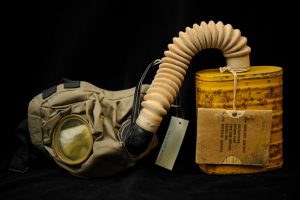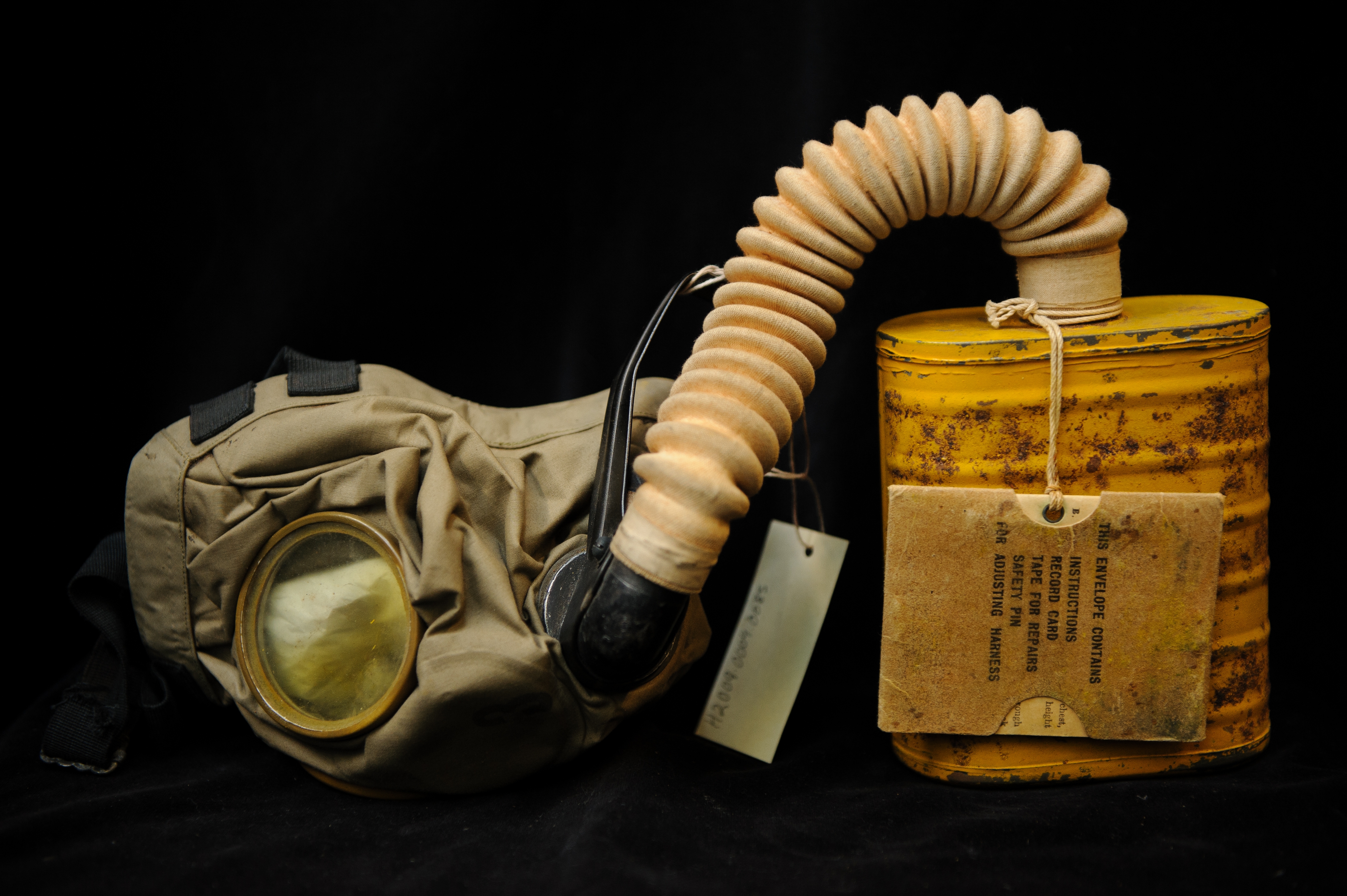
A gas mask can be found in the Gorgas House Museum collections that was assigned to William Crawford Gorgas during World War I when he was surgeon general of the United States Army. The gas mask is housed in a tan canvas bag with thick canvas shoulder strap. On the exterior of the bag, handwritten, are William Gorgas’ initials, “W.C.G.”
World War I was the first widespread use of chemical warfare in modern history. While the appearance of the gas mask varied according to the army involved in the conflict, all gas masks operated upon the same concept of protecting the user from inhaling airborne pollutants and toxic gases. The mask was used to cover the soft, vulnerable tissues of the wearer’s face, most often the nose and mouth, but sometimes the eyes, just as in this gas mask. The gas mask did not protect the wearer from toxins that could be ingested through the skin.
The American-issued gas mask consisted of a face piece, a fabric accordion tube and an attached metal canister. The canister was kept in the bag slung around the soldier’s neck, and the soldier was also issued a defogger, which would clear the eye pieces from any moisture buildup. The Gorgas gas mask still has its defogger intact.
During World War I, the toxins a soldier was most likely to encounter were sulfur mustard and chlorine gas. The first usage of gas on the western front of the war was used by German soldiers on Canadian and French forces in April 1915. The development of the gas mask then began with gas masks being made even for horses and dogs, many of which were made in America for American and Allied troops.
Gorgas was the son of the eighth president of The University of Alabama, Josiah Gorgas, and Amelia Gayle Gorgas. He served as the surgeon general of the United States Army from 1914-1918 and played an instrumental role in preparing the Army’s medical corps for service during World War I. The war marked the first time that more American soldiers died from wounds sustained in battle rather than sanitary conditions of the hospital and camp.
The Gorgas House Museum is the oldest structure on the University of Alabama campus. Built in 1829, the building served as a dining hall, hotel and residence for the University’s steward. Converted into a faculty residence in the 1840s, it was one of seven buildings to survive the campus Civil War burning in 1865. The building also housed the University’s hospital, first post office and first study hall for female students. Named for the Gorgas family, Josiah Gorgas served as the University’s eighth president and his wife, Amelia, was the University’s librarian, nurse matron and postmistress. The Gorgas family lived in the home from 1879-1953 and many original Gorgas family objects are on display in the museum.
Lydia Ellington Joffray, Gorgas House Museum director, provided the above information.
